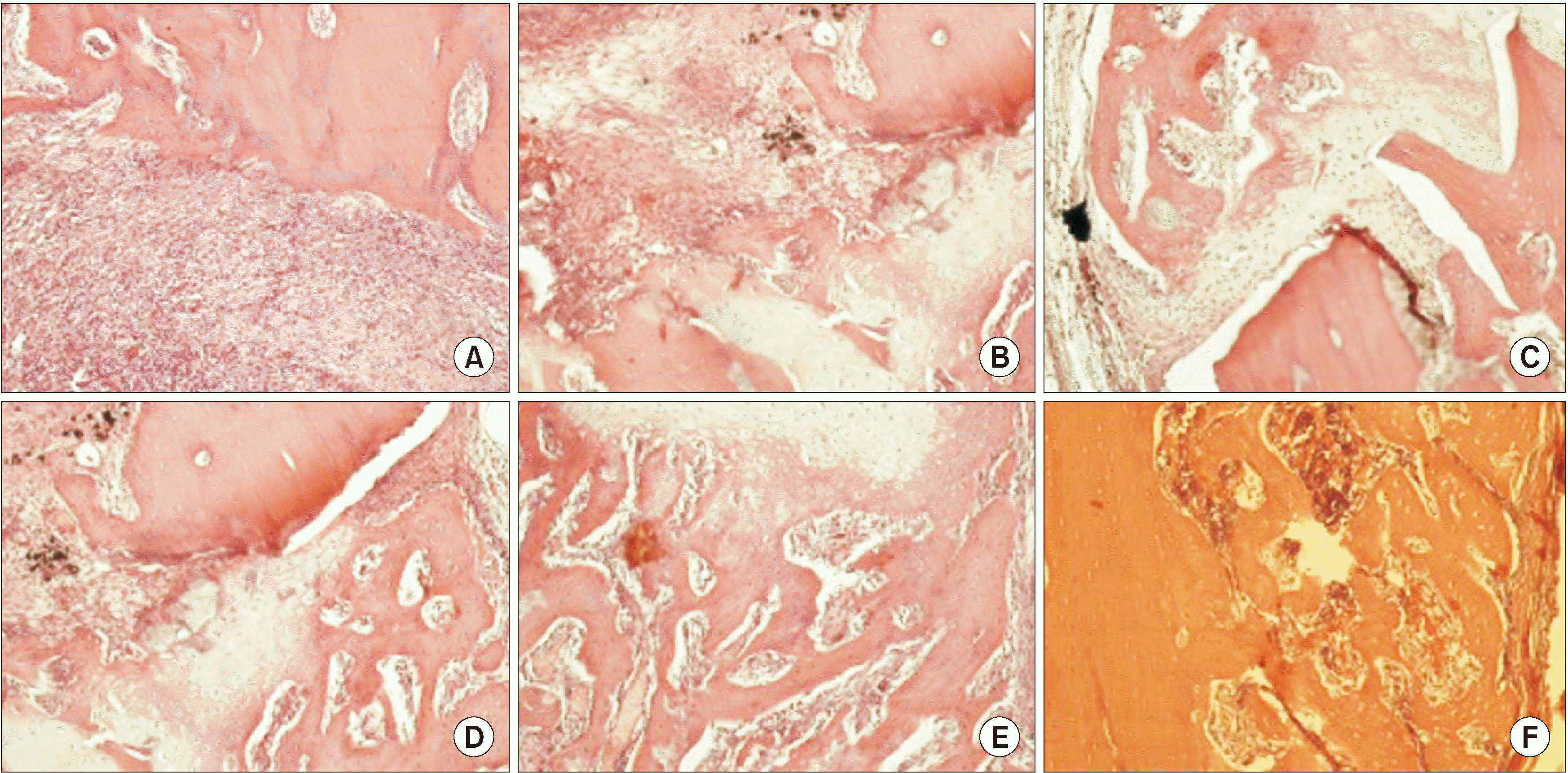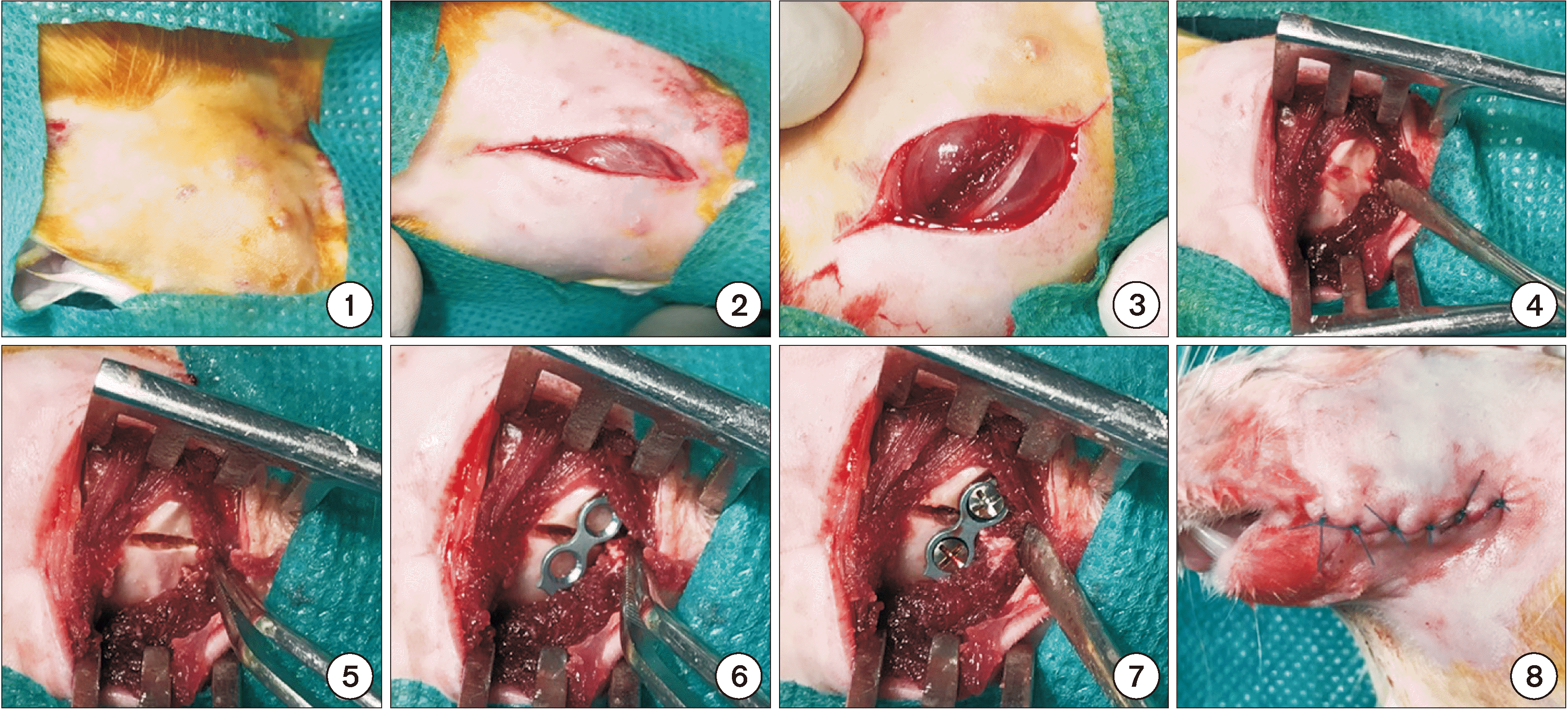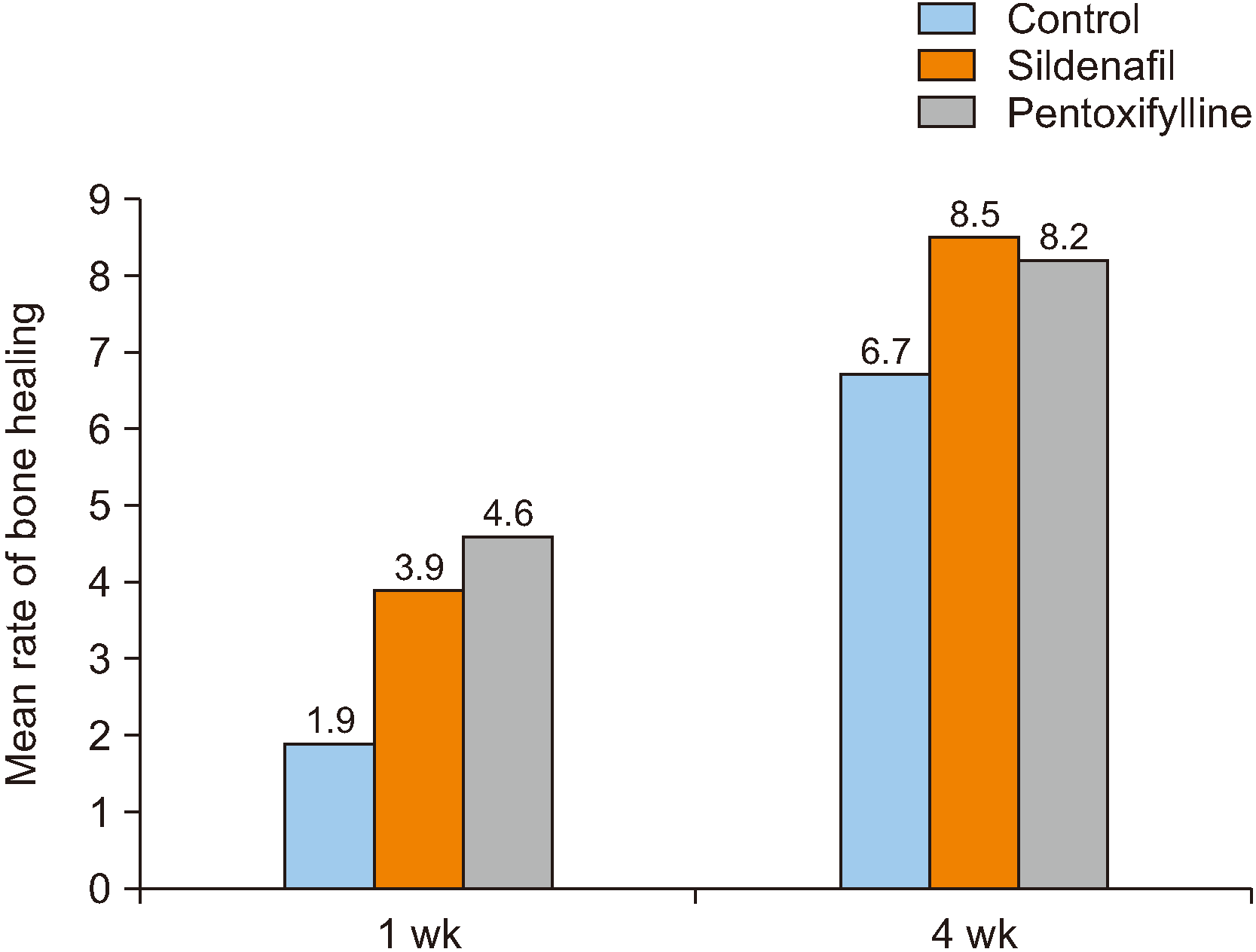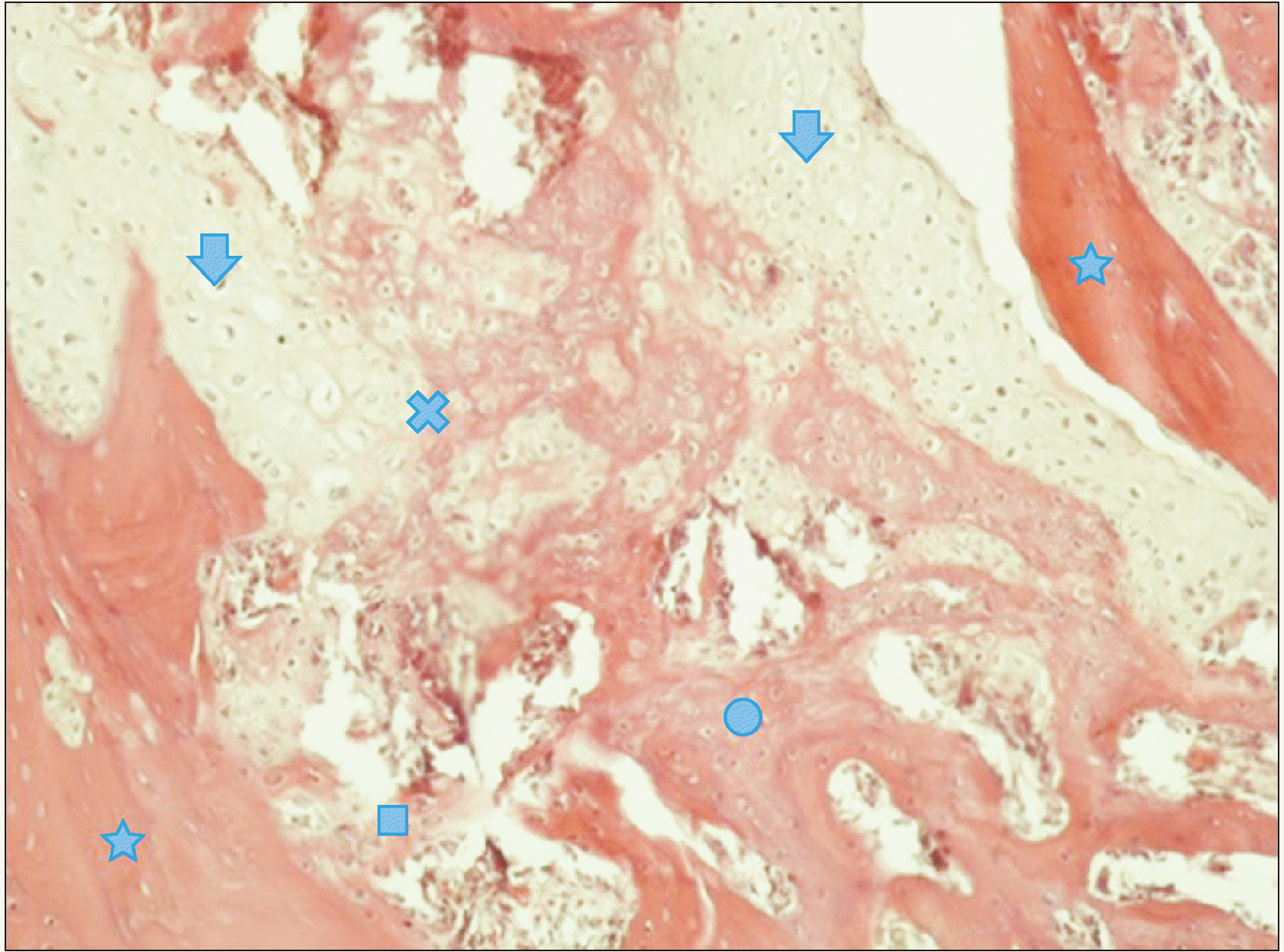4. Durmuş K, Turgut NH, Doğan M, Tuncer E, Özer H, Altuntaş EE, et al. 2017; Histopathological evaluation of the effect of locally administered strontium on healing time in mandibular fractures: an experimental study. Adv Clin Exp Med. 26:1063–7.
https://doi.org/10.17219/acem/65477
. DOI:
10.17219/acem/65477. PMID:
29211352.

10. Massari L, Caruso G, Sollazzo V, Setti S. 2009; Pulsed electromagnetic fields and low intensity pulsed ultrasound in bone tissue. Clin Cases Miner Bone Metab. 6:149–54. PMID:
22461165. PMCID:
PMC2781224.
14. Lienau J, Schell H, Epari DR, Schütze N, Jakob F, Duda GN, et al. 2006; CYR61 (CCN1) protein expression during fracture healing in an ovine tibial model and its relation to the mechanical fixation stability. J Orthop Res. 24:254–62.
https://doi.org/10.1002/jor.20035
. DOI:
10.1002/jor.20035. PMID:
16435358.

20. Vidavalur R, Penumathsa SV, Zhan L, Thirunavukkarasu M, Maulik N. 2006; Sildenafil induces angiogenic response in human coronary arteriolar endothelial cells through the expression of thioredoxin, hemeoxygenase and vascular endothelial growth factor. Vascul Pharmacol. 45:91–5.
https://doi.org/10.1016/j.vph.2006.03.010
. DOI:
10.1016/j.vph.2006.03.010. PMID:
16716755.

27. Vashghani Farahani MM, Masteri Farahani R, Mostafavinia A, Abbasian MR, Pouriran R, Noruzian M, et al. 2015; Effect of pentoxifylline administration on an experimental rat model of femur fracture healing with intramedullary fixation. Iran Red Crescent Med J. 17:e29513.
https://doi.org/10.5812/ircmj.29513
. DOI:
10.5812/ircmj.29513. PMID:
26756019. PMCID:
PMC4707237.

34. Aydin K, Sahin V, Gürsu S, Mercan AS, Demir B, Yildirim T. 2011; Effect of pentoxifylline on fracture healing: an experimental study. Eklem Hastalik Cerrahisi. 22:160–5. PMID:
22085352.
42. Yaman F, Atilgan S, Günes N, Agacayak S, Günay A, Ucan MC, et al. 2011; Phosphodiesterase-5 inhibitors may facilitate bone defect recovery. Eur Rev Med Pharmacol Sci. 15:1301–5. PMID:
22195363.
47. Horiuchi H, Saito N, Kinoshita T, Wakabayashi S, Tsutsumimoto T, Otsuru S, et al. 2004; Enhancement of recombinant human bone morphogenetic protein-2 (rhBMP-2)-induced new bone formation by concurrent treatment with parathyroid hormone and a phosphodiesterase inhibitor, pentoxifylline. J Bone Miner Metab. 22:329–34.
https://doi.org/10.1007/s00774-003-0490-y
. DOI:
10.1007/s00774-003-0490-y.






 PDF
PDF Citation
Citation Print
Print






 XML Download
XML Download